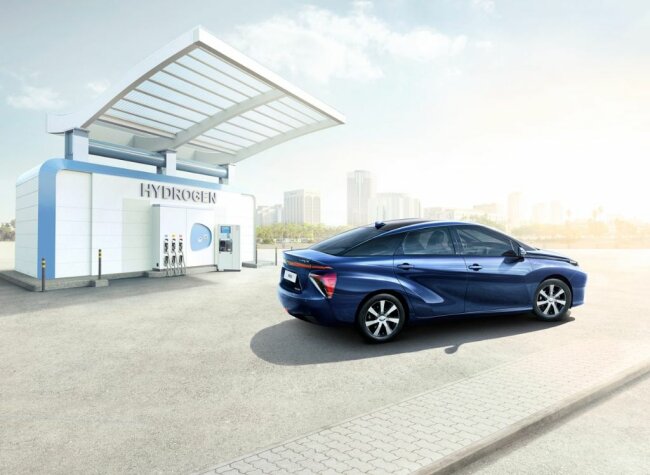Fuel cells or batteries – or BOTH?
We often hear about whether fuel cells will ever make it to market, or why is there such an effort in fuel cells when batteries can do the job better & cheaper – and do it now. Some people will even say fuel cells are the dumbest idea ever.
At Horizon we believe each energy storage technology is different and has a specific role to play. There is no winner; there is no loser in when it comes to battery – fuel cell confrontation. Both are electrical energy storage devices, and it comes down to the essence of how these different devices work. Batteries can pack a tremendous punch from a very small form-factor compared to a fuel cell. They are also much cheaper, for the power they deliver – and probably always will be. Their charging efficiency is also very high, “why not just charge a battery” is often what we all read or hear about.
Yes, batteries can deliver lots of power (W) from a small form-factor, but they cannot sustain a very high energy capacity. The reason we see electric cars with so many batteries packed inside, is to enable “range” or increase the power duration (Watts x Hour or Wh). So to understand the difference between fuel cells and batteries, one needs to separate the two concepts of Power (W) and Energy (Wh). Fuel cells tend to be more expensive for the power they deliver as compared to batteries, and they probably will continue to be. However the amount of energy or power duration (Wh) they can deliver can be significantly better, and also much cheaper.
What we should come away with — is that batteries should be used to supply high current loads, and fuel cells should not.
Then there’s the supercapacitor.
Supercapacitors use a special ‘double layer’ dielectric to store energy. A dielectric is simply a kind of insulator that creates an internal electric field allowing for the storage of electrical energy. In a supercapacitor an electrolyte sits between two conductors. At the point the electrolyte meets the conductor the positive ions of the electrolyte repel the electrons of the conductor creating two layers – one negatively charged and the other positively charged. Between the two layers are ‘polarized’ particles which are perfect for storing large amounts of energy. Supercapacitors can supply between ten and twenty times the power of ordinary batteries and have between ten and a hundred times the energy density.
Whenever the power demands on the fuel cell grow too much the capacitor steps in to lighten the load. In practice this means that the fuel cell concentrates on providing power when the car travels at a constant speed or when the ‘Speed Lock’ cruise control is engaged, while the supercapacitor handles peak energy needs such as acceleration.
So the capacitor is there to provide a power boost, when the hydrogen system does not have enough power to accelerate but provides the extra energy capacity that capacitors lack. Because the capacitor is used so sparingly and in such short bursts it’s more than feasible that the charger can be entirely ecofriendly In real-scale vehicles supercapacitors can also generate electricity from the braking energy of the vehicle (regenerative braking), significantly increasing the efficiency of an engine that is already 50% more efficient than gasoline alternatives.
Hybrid vehicles running on a combination of hydrogen and a super capacitor don’t have to be a compromise. Instead hybrids can be a synthesis of two different kinds of sustainable energy working together to create a far more efficient system.
